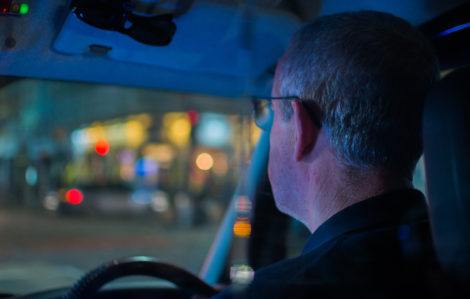For immediate release: May 19, 2020
Boston, MA – Workplace transmission of the coronavirus that causes COVID-19 likely played a substantial role in the local spread of the disease during the early stages of the outbreak in six Asian countries, according to new research led by Harvard T.H. Chan School of Public Health. The majority of the possible work-related cases occurred in occupations outside of health care, according to the study.
The findings were published on May 19, 2020 in PLOS ONE.
The observational study examined confirmed COVID-19 cases from governmental investigation reports in Hong Kong, Japan, Singapore, Taiwan, Thailand, and Vietnam. The researchers identified 103 possible work-related cases among a total of 690 local transmissions. All cases examined for the study occurred within 40 days of the first-known locally transmitted case within each country.
The results indicated that possible work-related transmission accounted for 47% of the initial outbreaks examined in the study. The occupational groups with the most cases were: health care workers (HCWs), which accounted for 22% of work-related cases; drivers and transport workers, which accounted for 18% of work-related cases; services and sales workers, which accounted for 18% of work-related cases; janitorial and domestic workers, which accounted for 9% of work-related cases; and public safety workers, which accounted for 7% of work-related cases.
“Our study highlights several occupations that have higher potential risks and should be closely monitored as various countries, states, and areas begin to gradually re-open their economies,” said corresponding author Stefanos Kales, professor in the Department of Environmental Health at Harvard Chan School and chief of occupational medicine at Cambridge Health Alliance.
While it is well known that health care workers are at a heightened risk of potential exposure, little is known about the risk the coronavirus poses to taxi drivers, tour guides, cleaners and janitors, civil servants, and similar workers who have frequent contact with the public. The researchers noted that these high-risk non-HCW occupations are less likely to have personal protective equipment or proper infection control in their workplaces, and that contact tracing is much more challenging for non-HCW cases compared with cases among HCWs.
The study also showed that the occupations at greatest risk varied depending on the stage of the outbreak. In the early days of the outbreak, services and sales workers, drivers, construction laborers, and religious professionals were at greater risk. As time went on and the disease spread, HCWs, drivers, janitorial and domestic workers, and police officers were at greater risk.
The findings indicate that implementing robust preventive strategies and surveillance strategies for high-risk occupations is necessary, the authors said.
“Protecting the high-risk workers in occupations identified in this study not only helps protect them from being affected, but it provides an opportunity to prevent secondary infections of family, colleagues, and customers,” said Fan-Yun Lan, lead author of the study and a doctoral candidate in Population Health Sciences in the Department of Environmental Health.
“Work-related COVID-19 transmission in six Asian countries/areas: a follow-up study,” Fan-Yun Lan, Chih-Fu Wei, Yu-Tien Hsu, David C. Christiani, Stefanos N. Kales, online May 19, 2020, PLOS ONE, doi: 10.1371/journal.pone.0233588
photo: Shutterstock
Visit the Harvard Chan School website for the latest news, press releases, and multimedia offerings.
Nicole Rura
617.432.6141
nrura@hsph.harvard.edu
###
Harvard T.H. Chan School of Public Health brings together dedicated experts from many disciplines to educate new generations of global health leaders and produce powerful ideas that improve the lives and health of people everywhere. As a community of leading scientists, educators, and students, we work together to take innovative ideas from the laboratory to people’s lives—not only making scientific breakthroughs, but also working to change individual behaviors, public policies, and health care practices. Each year, more than 400 faculty members at Harvard Chan School teach 1,000-plus full-time students from around the world and train thousands more through online and executive education courses. Founded in 1913 as the Harvard-MIT School of Health Officers, the School is recognized as America’s oldest professional training program in public health.
